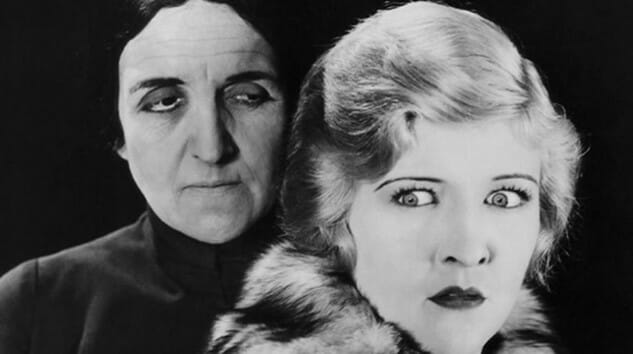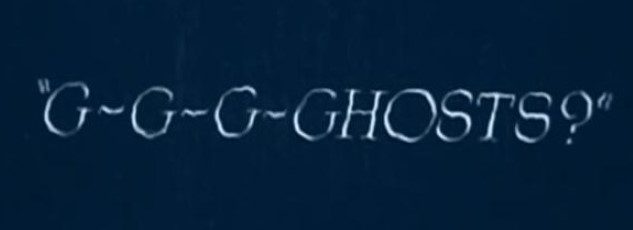
This post is part of Paste’s Century of Terror project, a countdown of the 100 best horror films of the last 100 years, culminating on Halloween. You can see the full list in the master document, which will collect each year’s individual film entry as it is posted.
The Year
After taking a year off from horror, Lon Chaney is back in action in two of 1927’s most notable horror films, in the form of The Unknown and the mysterious London After Midnight. Both films happened to have been directed by Dracula’s Tod Browning, but only The Unknown can actually be seen in 2019. Like The Hunchback of Notre Dame or The Phantom of the Opera, this story also sees Chaney playing a disfigured man in love with a woman he can’t possess—only this time, the disfigurement is actually an elaborate con.
London After Midnight, meanwhile, is perhaps the most famous “lost” horror film of all time, and certainly is among the most sought-after of all lost works of the silent era. A detective thriller at heart, its horror reputation comes from Chaney’s particularly ghoulish makeup job, which saw him playing a vampire-like character with sharp, filed teeth and a dapper beaver hat. Reception to the film was mixed at the time of its release, but the destruction of the last known copy of London After Midnight in the 1965 MGM vault fire, coupled with the surviving production photos of Chaney’s makeup, have since catapulted it to mythic status. The closest that any of us will likely ever get to seeing it is the 2002 reconstruction from Turner Classic Movies, which combined the original script with various production stills and artwork to illustrate a rough outline of the film. But who knows—maybe someday, a full copy will be discovered.
1927 also gives us an early Hitchcock silent entry in the form of The Lodger: A Story of the London Fog, and the particularly influential “old dark house” yarn The Cat and the Canary, making this arguably the strongest overall year for horror cinema in the back half of the 1920s.
1927 Honorable Mentions: The Unknown, London After Midnight (lost film), The Lodger: A Story of the London Fog, The Last Performance, The Gorilla
The Film: The Cat and the Canary
Director: Paul Leni
Few horror films have been remade so many times, at least in a loose sense, as The Cat and the Canary. It wasn’t the absolute first film to bear the hallmarks we would stylistically come to refer to as the “old dark house movie” (The Monster did it in 1925), but its success made it the first to turn most of the subgenre’s tropes into institutions that have been repeated in other Old Dark House films for nearly 100 years. In fact, the tropes of The Cat and the Canary still seem so familiar today that the experience of watching it for the first time in 2019 feels oddly comforting, as if you’ve seen the film before.
The Cat and the Canary doesn’t quite have the artistic pretensions present in A Page of Madness, or even The Phantom of the Opera, but it can earnestly claim to be a fun, entertaining mystery that holds up surprisingly well to modern viewing. In truth, it’s actually something of a stylistic mashup—a straightforward mystery plot born out of a stage play, revolving around an extended cast of suspicious characters brought together to spend the night in a spooky old mansion, accented by the German Expressionist visual stylings of director Paul Leni. These inspirations aren’t present in the performances so much as they are in the establishing shots, cinematography and even the quirky, moving intertitles, which have much more personality than most films of the time. The exterior illustrations of the house itself, meanwhile, look like something out of Nosferatu, bleeding around the edges into the night, as if its evil can’t be contained. How perfectly spooky, right?
Plenty of other Old Dark House bonafides get their start here. There are secret passageways. A missing will, which names one of the people in the house as a beneficiary. An “escaped lunatic” named The Cat on the loose, who may or may not be prowling the mansion. Disguises. Deaths that turn out not to be deaths. It’s all there. On the other hand, though, there are a few wrinkles that make The Cat and the Canary unlike some of the other films that would follow in its footsteps—such as the fact that the dweeby comic relief character, who is introduced with the phrase “Why Paul, I haven’t seen you since nurse dropped you on your head!”—somehow turns out to be the hero.
Today, The Cat and the Canary makes for charming, spooky, “low-stakes” viewing—the preponderance of spider webs covering every surface of the mansion make it feel like the visual inspiration for every Halloween haunted house you ever visited as a child. Being a silent film, you can’t hear every hinge creaking when characters creep about in the darkness, and yet somehow you know that they are. It’s Scooby Doo, more than 40 years earlier.
And finally: The film has a literal “G-G-G-Ghosts?!?” intertitle card in it. What more could you want?

Jim Vorel is a Paste staff writer and resident horror guru. You can follow him on Twitter for more film and TV writing.